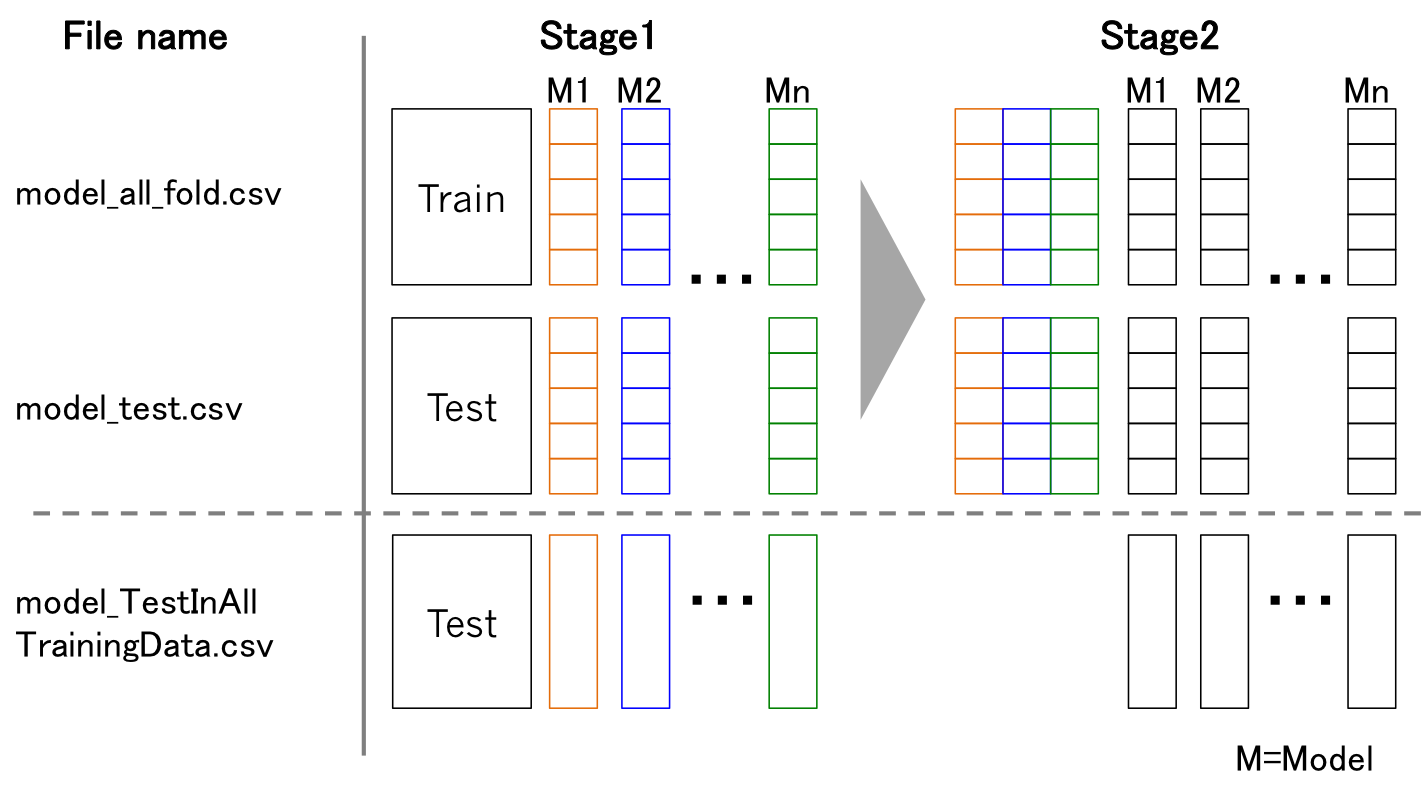ikki407 / Stacking
Programming Languages
Projects that are alternatives of or similar to Stacking
Stacking (stacked generalization)
Overview
ikki407/stacking - Simple and useful stacking library, written in Python.
User can use models of scikit-learn, XGboost, and Keras for stacking.
As a feature of this library, all out-of-fold predictions can be saved for further analisys after training.
Description
Stacking (sometimes called stacked generalization) involves training a learning algorithm to combine the predictions of several other learning algorithms. The basic idea is to use a pool of base classifiers, then using another classifier to combine their predictions, with the aim of reducing the generalization error.
This blog is very helpful to understand stacking and ensemble learning.
Usage
See working example:
To run these examples, just run sh run.sh. Note that:
-
Set train and test dataset under data/input
-
Created features from original dataset need to be under data/output/features
-
Models for stacking are defined in
scripts.pyunder scripts folder -
Need to define created features in that scripts
-
Just run
sh run.sh(python scripts/XXX.py).
Detailed Usage
-
Set train dataset with its target data and test dataset.
FEATURE_LIST_stage1 = { 'train':( INPUT_PATH + 'train.csv', FEATURES_PATH + 'train_log.csv', ), 'target':( INPUT_PATH + 'target.csv', ), 'test':( INPUT_PATH + 'test.csv', FEATURES_PATH + 'test_log.csv', ), }
-
Define model classes that inherit
BaseModelclass, which are used in Stage 1, Stage 2, ..., Stage N.# For Stage 1 PARAMS_V1 = { 'colsample_bytree':0.80, 'learning_rate':0.1,"eval_metric":"auc", 'max_depth':5, 'min_child_weight':1, 'nthread':4, 'objective':'binary:logistic','seed':407, 'silent':1, 'subsample':0.60, } class ModelV1(BaseModel): def build_model(self): return XGBClassifier(params=self.params, num_round=10) ... # For Stage 2 PARAMS_V1_stage2 = { 'penalty':'l2', 'tol':0.0001, 'C':1.0, 'random_state':None, 'verbose':0, 'n_jobs':8 } class ModelV1_stage2(BaseModel): def build_model(self): return LR(**self.params)
-
Train each models of Stage 1 for stacking.
m = ModelV1(name="v1_stage1", flist=FEATURE_LIST_stage1, params = PARAMS_V1, kind = 'st' ) m.run() ...
-
Train each model(s) of Stage 2 by using the prediction of Stage-1 models.
FEATURE_LIST_stage2 = { 'train': ( TEMP_PATH + 'v1_stage1_all_fold.csv', TEMP_PATH + 'v2_stage1_all_fold.csv', TEMP_PATH + 'v3_stage1_all_fold.csv', TEMP_PATH + 'v4_stage1_all_fold.csv', ... ), 'target':( INPUT_PATH + 'target.csv', ), 'test': ( TEMP_PATH + 'v1_stage1_test.csv', TEMP_PATH + 'v2_stage1_test.csv', TEMP_PATH + 'v3_stage1_test.csv', TEMP_PATH + 'v4_stage1_test.csv', ... ), } # Models m = ModelV1_stage2(name="v1_stage2", flist=FEATURE_LIST_stage2, params = PARAMS_V1_stage2, kind = 'st', ) m.run()
-
Final result is saved as
v1_stage2_TestInAllTrainingData.csv.
Prerequisite
- (MaxOS) Install xgboost first manually:
pip install xgboost - (Optional) Install paratext: fast csv loading library
- From https://github.com/wiseio/paratext
- You need to install swig by using
brew install swigbefore installing paratext if brew have been installed
Installation
To install stacking, cd to the stacking folder and run the install command**(up-to-date version, recommended)**:
sudo python setup.py install
You can also install stacking from PyPI:
pip install stacking
Files
- stacking/base.py : stacking module
- examples/
- binary_class : binary classification
- multi_class : multi-class classification
- regression : regression
Details of scripts
- base.py:
- Base models for stacking are defined here (using sklearn.base.BaseEstimator).
- Some models are defined here. e.g., XGBoost, Keras, Vowpal Wabbit.
- These models are wrapped as scikit-learn like (using sklearn.base.ClassifierMixin, sklearn.base.RegressorMixin).
- That is, model class has some methods, fit(), predict_proba(), and predict().
New user-defined models can be added here.
Scikit-learn models can be used.
Base model have some arguments.
-
's': Stacking. Saving oof(out-of-fold) prediction(
{model_name}_all_fold.csv) and average of test prediction based on train-fold models({model_name}_test.csv). These files will be used for next level stacking. -
't': Training with all data and predict test(
{model_name}_TestInAllTrainingData.csv). In this training, no validation data are used. -
'st': Stacking and then training with all data and predict test ('s' and 't').
-
'cv': Only cross validation without saving the prediction.
Define several models and its parameters used for stacking. Define task details on the top of script. Train and test feature set are defined here. Need to define CV-fold index.
Any level stacking can be defined.
Reference
[1] Wolpert, David H. Stacked generalization, Neural Networks, 5(2), 241-259


